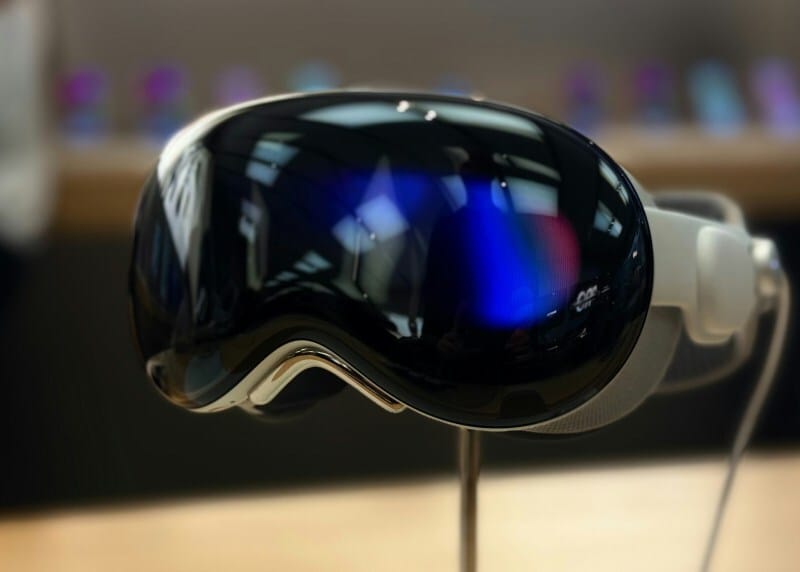Apple’s Vision Pro headset, which hit the market in 2024, marked the company’s first major step into mixed reality. In 2025, Apple is expanding the device into new regions and broadening its range of supported apps.
This has sparked new discussions about how immersive hardware might influence industries outside of entertainment and productivity. For the iGaming sector, the potential lies in how these features could reshape user experience (UX), from game design to platform delivery.

What the Vision Pro Offers in 2025
Apple describes its Vision Pro as a spatial computer. It brings together digital and physical environments and allows users to view apps, games, and media in three dimensions layered into their surroundings. As of 2025, the expansion brings more countries into Apple’s ecosystem, and this makes the headset accessible to a much larger audience. The device supports ultra-high resolution, micro-OLED displays, advanced eye-hand tracking, spatial audio and integration with Apple’s wider software ecosystem, including VisionOS.
These features stand out when considering iGaming because they point to new ways of engaging players. The use of immersive displays reduces the sense of detachment that can creep in when using a laptop or phone. Hand gestures and eye tracking offer intuitive input methods that have a much more natural feel when compared to simply tapping on a screen. This is especially important when looking a live games, where timing and realism are hugely important factors.

The Promise of Immersive Game Environments
Operators may be able to tap into the Vision Pro as it presents opportunities to create environments that mimic real casinos more closely. Rather than having blackjack rooms and roulette tables in a small display window, there’s the chance to have them surround the player. Instead of having to switch between games via a menu, it could be that players could ‘walk’ between tables or slot machines within a virtual floor plan.
The realism of Apple’s hardware, with its high-resolution visuals and lifelike audio, means that this is more than just a novelty. Developers who take advantage of these tools can deepen levels of immersion, and this has been the central aim of casinos over the last decade or so.

Challenges of Integration
The problem with all of this is that integrating iGaming into mixed reality is far from straightforward. There are regulatory hurdles, as many markets have levels of auction when it comes to new gambling interfaces. Hardware adoption is also a challenge: the Vision Pro is very much a premium device with a hefty price tag. This limits mass uptake. For most operators, investing heavily in development will only make sense once adoption significantly broadens.
From a technical point of view, latency and server performance are critical. A headset that displays environments in real time can’t afford delays in game streams or betting functions. The reality is that stability will be as important as the immersive aspects themselves.

Role of Aggregators in the New UX
Content delivery is another area where industry infrastructure becomes important. In the same way that mobile has reshaped the way that games are distributed, mixed reality will rely heavily on streamlined integration. An iGaming aggregator plays a major role here, allowing operators to access a huge catalogue of content through a single connection, rather than piecing together individual deals. In VR-driven or mixed reality spaces, this sort of efficiency becomes even more valuable, as developers and operators will need to test and deploy titles at speed.

Why Partnerships Matter
No operator will want the headache caused by facing technical complexity alone. Partnerships with established service providers help to reduce the risks associated with the adoption of new technology. The likes of Hub88 highlight how streamlined content delivery can offer support for innovation. By simplifying access to games and ensuring stable distribution, aggregators give operators the room to focus on building the immersive layers that make use of the Vision Pro’s hardware capabilities.
Practical Uses Beyond Full Immersion
Not every use case will centre on a player stepping into a virtual casino. In many cases, the Vision Pro may act as a multitasking hub where players are able to view live tables while also looking at statistics or maybe streaming content. Apple has positioned the headset as a productivity and entertainment device, so iGaming developers may experiment with hybrid formats where gaming is one of many simultaneous activities.

Looking Ahead to 2026 and Beyond
The expansion of the Vision Pro in 2025 is at an early stage, and it’s highly likely that there is set to be a gradual adoption curve. For iGaming, the short-term focus will be on experimentation and testing. The long-term outlook suggests that immersive UX could become a defining factor in player engagement, and it’s the platforms that prepare now that will see success.
The post Apple’s Vision Pro: What Its 2025 Expansion Means for iGaming UX appeared first on Moss and Fog.
